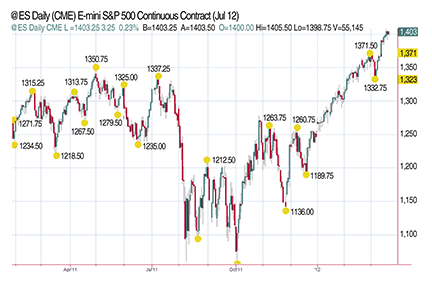
FIGURE 1: A CHOPPY MARKET. The yellow dots represent ideal entries and exits. The challenge is to find an indicator, pattern or setup that results in close approximations to the yellow dots.
TRADING SYSTEMS
Design And Test A System
Last time, we covered the basics of what a system is, why you need one, and how to find one. This time, you will learn how to design and test a system, whether it is your own or someone else’s.
The steps to building a system are simple. They are: Find the right indicator. Design your setups, and determine when to buy, when to sell if you’re right, and when to sell if you’re wrong. Test the system. And finally, analyze the results. That’s about it. It sounds easy when I put it that way, doesn’t it? Well, it’s not really difficult; it’s just tedious. But here’s why you need to go through it all.
Find the right indicator(s)
Many traders like to put a variety of indicators and/or systems on their charts in the hope that the more they add, the more likely they are to capture profits. Unfortunately, that is the least likely approach to capturing real-time profits. While indicators on charts look great, when you are reading a chart as it is forming, it is difficult to tell what the market might do next. So how do you find out?
Knowing there is money to be made going long and short because of the potential hourly wage (PHW) analysis (as explained in my June 2012 article) in the choppy market presented in Figure 1, we must determine what approach will net us something close to the 40% PHW number calculated.

FIGURE 1: A CHOPPY MARKET. The yellow dots represent ideal entries and exits. The challenge is to find an indicator, pattern or setup that results in close approximations to the yellow dots.
I like to leave the yellow-dot indicator on my chart while I am conducting research and I am trading to remind myself to examine just how close I am getting to the ideal.